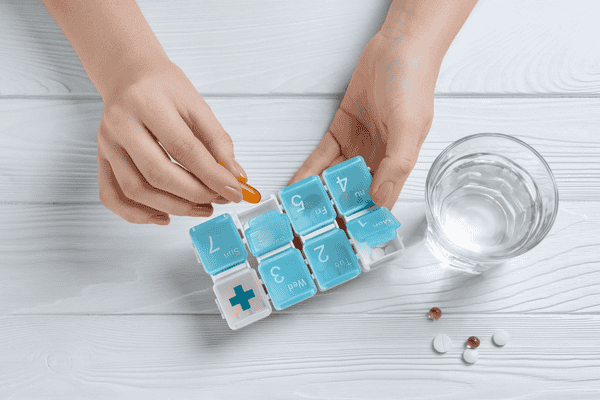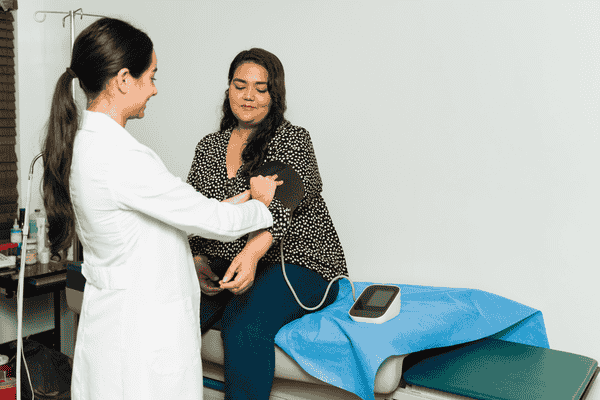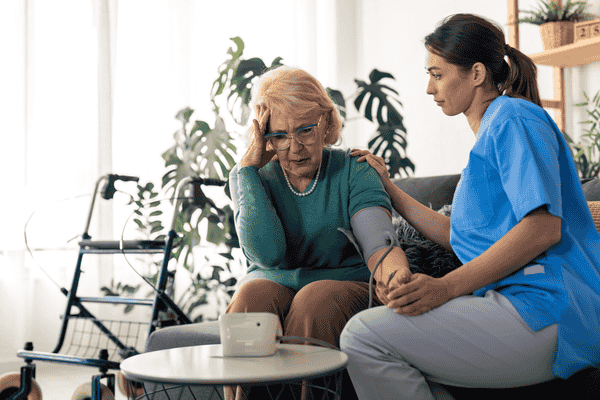Introduction: The Caregiver’s Journey with Medication Management
When Emily first became the primary caregiver for her aging mother, Sarah, she was overwhelmed by the sheer number of medications her mother had to take daily. Each morning, as she stared at the assortment of pills, bottles, and syringes on the kitchen counter, she couldn’t help but feel a mix of anxiety and responsibility. The fear of making a mistake weighed heavily on her mind. What if she gave her mother the wrong medication? What if she missed a dose? The world of medication management felt like a labyrinth, with potential pitfalls at every turn.
But Emily wasn’t alone in her concerns. Caregivers across the globe share the same worries, navigating the complex landscape of medication administration for their loved ones. It’s a daunting task, but one that can be managed effectively with the right knowledge and tools. This guide is here to provide caregivers like Emily with the insights, strategies, and confidence needed to ensure the safe and effective administration of medications, safeguarding the well-being of those in their care.
Understanding the Importance of Safe Medication Administration
Emily’s fears weren’t unfounded. Medication errors can have serious consequences, from adverse drug events to potentially life-threatening situations. The importance of safe medication administration cannot be overstated. It’s about more than just giving the right pill at the right time; it’s about understanding drug interactions, managing side effects, and ensuring that medications are stored and disposed of properly.
For caregivers, the first step is to recognize that medication safety is a shared responsibility. While healthcare professionals prescribe and monitor medications, caregivers play a critical role in their day-to-day administration. By being well-informed and diligent, caregivers can prevent medication-related problems and ensure their loved ones receive the intended benefits of their treatments.
Managing Medications: Common Challenges and Solutions
In the beginning, Emily struggled with keeping track of her mother’s medications. Sarah was prescribed a mix of pills, liquids, and even injections, each with different dosages and schedules. It wasn’t long before Emily realized that she needed a system to stay organized and avoid mistakes.
1. Keeping Track of Multiple Medications
One of the most common challenges caregivers face is managing multiple medications. For Emily, the solution came in the form of a comprehensive medication list. She began by writing down every medication her mother was taking, including over-the-counter drugs and supplements. She noted the dosages, the frequency of administration, and any special instructions provided by the doctor.
To make things easier, Emily invested in a pill organizer with compartments for each day of the week. She filled it every Sunday, ensuring that each pill was in its correct slot for the week ahead. This not only helped her stay organized but also provided a visual reminder of what needed to be taken and when.
2. Avoiding Medication Errors
Despite her careful organization, Emily knew that mistakes could still happen. To minimize the risk, she developed a habit of double-checking each medication before administering it. She also set up a reminder system on her phone to alert her when it was time for her mother’s next dose.
Whenever Emily had doubts about a medication, she didn’t hesitate to contact her mother’s healthcare provider for clarification. This proactive approach helped her feel more confident and ensured that her mother was receiving the correct treatment.
3. Dealing with Potential Side Effects
Emily was always vigilant about monitoring her mother for any changes after starting a new medication. She knew that side effects could range from mild discomfort to serious health issues. Whenever she noticed something unusual, such as a rash or a change in behavior, she immediately contacted the doctor for advice.
4. Adhering to Medication Schedules
Maintaining a consistent medication schedule was crucial for Sarah’s health. To ensure that she didn’t miss a dose, Emily established a routine. She incorporated medication times into her mother’s daily activities, making it easier for both of them to remember. For instance, Sarah took her morning pills right after breakfast and her evening medications just before bedtime.
5. Managing Medication Refills
Running out of medication was a fear that Emily wanted to avoid at all costs. To prevent this, she synced her mother’s prescription refills, arranging for all medications to be refilled at the same time. She kept track of the refill dates in a dedicated notebook, ensuring that there was always an ample supply on hand.
Creating a Medication List and Schedule
As Emily settled into her role as a caregiver, she realized the importance of having a detailed medication list and schedule. This not only helped her stay organized but also provided valuable information for healthcare professionals during visits.
Step 1: Gathering All Relevant Information
Emily began by gathering all of her mother’s medications, including prescription drugs, over-the-counter medicines, and supplements. She noted down the name of each medication, the dosage, the frequency of administration, and any special instructions, such as whether the medication should be taken with food or at a specific time of day.
Step 2: Using a Medication Management Tool
To streamline the process, Emily decided to use a medication management app on her smartphone. The app allowed her to input all the information she had gathered and set up reminders for each dose. It also had a feature that alerted her when it was time to reorder a prescription, which proved to be incredibly helpful.
Step 3: Creating a Medication Schedule
Emily created a medication schedule using a simple spreadsheet. She listed each medication, along with the corresponding dosage and the time it should be taken. To make the schedule easy to follow, she color-coded it, assigning a different color to each medication. This visual aid helped her quickly identify which medications needed to be administered at specific times.
Step 4: Regularly Updating and Reviewing the List
Emily made it a point to review and update the medication list regularly. She kept the schedule in a place where it was easily accessible, both for herself and for any other caregivers who might step in to help. Whenever there were changes in her mother’s medication regimen, Emily updated the list immediately and communicated the changes to the healthcare professionals involved in her mother’s care.
Step 5: Communicating with Healthcare Professionals
During each doctor’s visit, Emily brought along the updated medication list and schedule. This allowed the healthcare provider to have a complete overview of the medications her mother was taking and make informed decisions about her treatment. It also provided an opportunity for Emily to ask questions and discuss any concerns she had.
Organizing Medications: Practical Tips for Caregivers
As Emily became more experienced in managing her mother’s medications, she discovered a few strategies that made the process more efficient and less stressful.
1. Create a Comprehensive Medication List
A detailed and up-to-date medication list is essential for caregivers. It serves as a quick reference guide and helps prevent medication errors. Emily’s list included not just the names of the medications, but also the dosages, administration instructions, and any potential side effects to watch for.
2. Utilize Pill Organizers
Pill organizers were a game-changer for Emily. She used one with compartments for each day of the week, which allowed her to pre-sort her mother’s medication administration and provide a visual reminder of what needed to be taken each day. This simple tool significantly reduced the risk of missing a dose or taking the wrong medication.
3. Consider Medication Wallets
When Emily and her mother had to travel for medical appointments or family visits, medication wallets proved to be incredibly useful. These compact, portable organizers allowed Emily to carry essential medications with her, ensuring they were always readily available.
4. Simplify Storage
Emily designated a specific space in the kitchen for medication storage. She kept the medications in their original packaging to retain crucial information, such as expiration dates and potential side effects. To ensure safety, she stored the medications out of reach of children and pets and away from heat and moisture.
5. Establish a Routine
Creating a consistent medication administration routine was key to minimizing the risk of missed doses. By tying medication times to her mother’s daily activities, Emily made it easier to remember when each dose needed to be taken.
6. Ensure Clear Communication
Emily knew that clear communication was vital, not just with her mother, but with any other caregivers involved in her care. She made sure that everyone understood the medication schedule and the importance of adhering to it.
Medication Safety and Prevention of Medication-Related Problems
With her system in place, Emily felt more confident in her ability to manage her mother’s medications. However, she remained vigilant about medication safety and took additional steps to prevent potential problems.
1. Stay Informed and Educated
Emily made it a priority to educate herself about each of her mother’s medications. She read the information provided by the pharmacist and consulted healthcare professionals whenever she had questions. The more she knew, the better she could manage her mother’s care.
2. Maintain an Updated Medication List
Keeping an updated medication list was crucial. Emily reviewed it regularly and made sure it was always accurate. This list was invaluable during doctor’s visits and in case of emergencies.
3. Ensure Proper Medication Storage
Emily followed all the storage instructions provided for each medication. She knew that improper storage could affect the effectiveness of the medications, so she was careful to store them in a cool, dry place, away from sunlight and moisture.
4. Follow the Prescribed Dosage and Schedule
Emily adhered strictly to the prescribed dosage and schedule for each medication. She used alarms on her phone and the reminders in her medication management app to ensure that her mother never missed a dose.
5. Watch for Adverse Reactions or Side Effects
Emily was always on the lookout for any signs of adverse reactions or side effects. If she noticed anything unusual, she immediately contacted her mother’s healthcare provider.
6. Be Aware of Potential Drug Interactions
With multiple medications in play, Emily was keenly aware of the potential for drug interactions. She made sure that her mother’s healthcare providers had a complete list of her medications and regularly reviewed it with them to prevent any dangerous combinations.
Conclusion: Empowering Caregivers Through Knowledge and Support
Emily’s journey with her mother’s medication management wasn’t easy, but with the right tools, strategies, and support, she became confident in her ability to provide the care her mother needed. Her story is a testament to the resilience and dedication of caregivers everywhere.
For caregivers like Emily, the key to safe medication administration lies in education, organization, and communication. By staying informed, creating efficient systems, and seeking support when needed, caregivers can navigate the complexities of medication management and ensure the well-being of their loved ones.
Takeaway Tips for Caregivers:
- Educate Yourself: Understand each medication, its purpose, and its potential side effects.
- Stay Organized: Use tools like medication lists, pill organizers, and reminder apps to keep track of medications.
- Communicate: Keep open lines of communication with healthcare providers and other caregivers involved in the patient’s care.
- Monitor: Watch for any adverse reactions or side effects and act promptly if you notice anything unusual.
- Seek Support: Don’t hesitate to ask for help or clarification when needed. Remember, you’re not alone in this journey.













